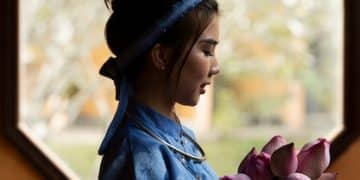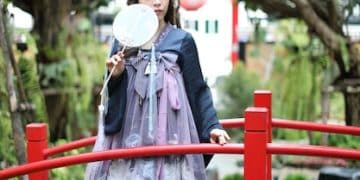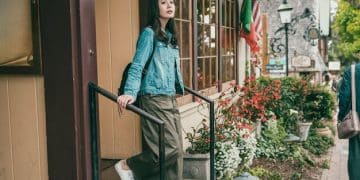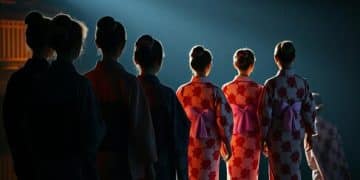Hanbok in the US: Discovering Authentic Korean Styles
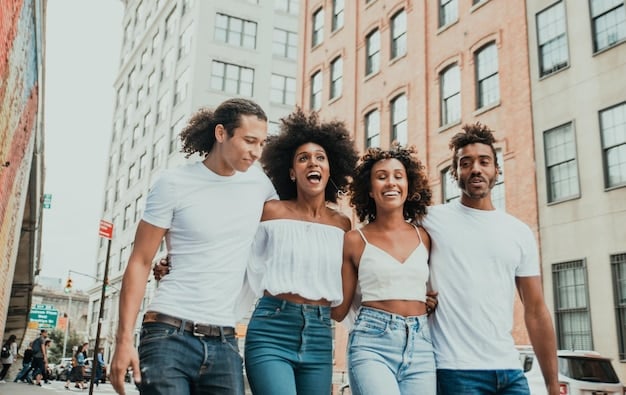
The rising popularity of Hanbok in the US reflects a growing appreciation for Korean culture, spurred by K-dramas and cultural exchanges, with authentic styles increasingly sought after for both special occasions and everyday wear.
The allure of Korean culture has woven its way into the American lifestyle, and one of the most striking examples is the rising popularity of Hanbok in the US: Where to Find Authentic Styles. This traditional Korean dress, with its elegant lines and vibrant colors, is finding a new audience, eager to embrace a piece of Korean heritage.
Understanding the Hanbok: A Cultural Icon
The Hanbok is more than just clothing; it’s a symbol of Korea’s history, artistry, and values. Its design, characterized by simple lines and vibrant colors, speaks volumes about Korean aesthetics and cultural identity. Understanding its significance helps appreciate why it’s gaining traction in the US.
The Historical Significance of Hanbok
Historically, the Hanbok has been worn for centuries, evolving in style and design over different dynasties. Each element of the Hanbok, from the Jeogori (upper garment) to the Chima (skirt), holds cultural significance. Knowing this history deepens the appreciation for its modern revival.
Key Elements of a Traditional Hanbok
The traditional Hanbok consists of several key components, including the Jeogori, Baji (pants for men), Chima, and Goreum (ribbons). These elements combine to create a silhouette that is both elegant and distinctly Korean. The colors and materials used also tell a story, often indicating social status or occasion.
- Jeogori: The upper garment, similar to a jacket, with long sleeves.
- Chima: A high-waisted, wrap-around skirt.
- Baji: Traditional Korean pants, usually worn by men.
- Goreum: Ribbons used to tie the Jeogori, adding a delicate touch.
In conclusion, understanding the historical significance and key elements of the Hanbok provides a deeper appreciation for its cultural value. This knowledge enhances the experience of wearing and cherishing this beautiful garment.
The K-Wave Effect: Hanbok’s Surge in Popularity
The “Korean Wave,” or K-Wave, has significantly fueled the rising popularity of Hanbok in the US. K-dramas, K-pop, and Korean films have showcased the beauty and versatility of the Hanbok, making it desirable to a global audience.
How K-Dramas Showcase Hanbok
K-dramas often feature Hanboks in historical settings, highlighting their beauty and elegance. These dramas not only entertain but also educate viewers about Korean culture and traditions. The visual appeal of actors wearing Hanboks captivates audiences and inspires interest.
Influence of K-Pop Idols
K-pop idols frequently incorporate Hanbok-inspired outfits into their music videos and performances. These modern interpretations blend traditional elements with contemporary fashion, making the Hanbok more accessible and appealing to younger generations. This fusion sparks curiosity and a desire to explore authentic styles.
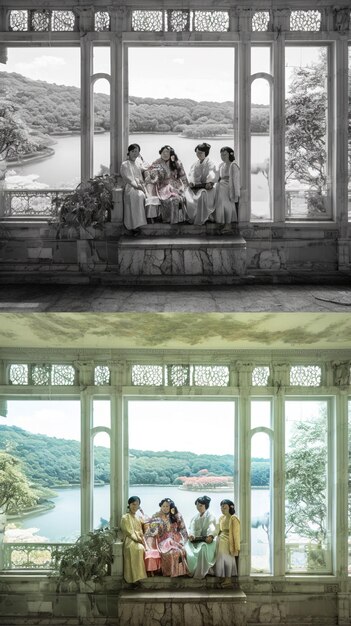
In short, the K-Wave has played a crucial role in introducing the Hanbok to a wider audience. Through dramas and music, the garment has become a symbol of Korean culture, sparking interest and driving its popularity in the US.
Where to Find Authentic Hanbok Styles in the US
As the rising popularity of Hanbok in the US grows, knowing where to find authentic styles becomes essential. Several options cater to different preferences, from online retailers to specialized boutiques.
Online Retailers Specializing in Hanbok
Several online retailers offer a wide range of Hanboks, from traditional designs to modern adaptations. These platforms provide convenience and variety, allowing customers to browse and purchase from the comfort of their homes. Ensure the retailer is reputable and offers detailed product descriptions and sizing charts.
Korean Cultural Centers and Boutiques
Korean cultural centers and specialized boutiques are excellent resources for finding authentic Hanboks. These establishments often carry handcrafted garments, offering a more personalized shopping experience. They provide expert advice on selecting the right style, fit, and accessories.
- Korean Cultural Centers: Offer traditional Hanboks and cultural insights.
- Specialized Boutiques: Provide handcrafted, authentic garments.
- Local Korean Communities: Often have seamstresses who can custom-make Hanboks.
In summary, whether you prefer the convenience of online shopping or the personalized experience of a boutique, finding authentic Hanbok styles in the US is becoming increasingly accessible. These resources ensure you can acquire a garment that honors Korean tradition and style.
Modern Adaptations: Blending Tradition with Contemporary Fashion
The rising popularity of Hanbok in the US isn’t limited to traditional styles; modern adaptations are also gaining traction. These contemporary takes on the classic garment blend traditional elements with modern fashion trends, making the Hanbok more versatile and wearable for everyday life.
Hanbok-Inspired Clothing for Everyday Wear
Designers are creating Hanbok-inspired pieces that can be incorporated into daily wardrobes. These items include Hanbok-style tops, skirts, and jackets that feature traditional cuts and details but are made from modern fabrics. This fusion allows individuals to express their appreciation for Korean culture in a subtle and stylish way.
Designers Who are Revolutionizing Hanbok
Several designers are revolutionizing the Hanbok by creating innovative and fashion-forward designs. They experiment with different colors, fabrics, and silhouettes, pushing the boundaries of traditional Hanbok while maintaining its essence. These designers cater to a new generation of Hanbok enthusiasts who seek unique and contemporary styles.
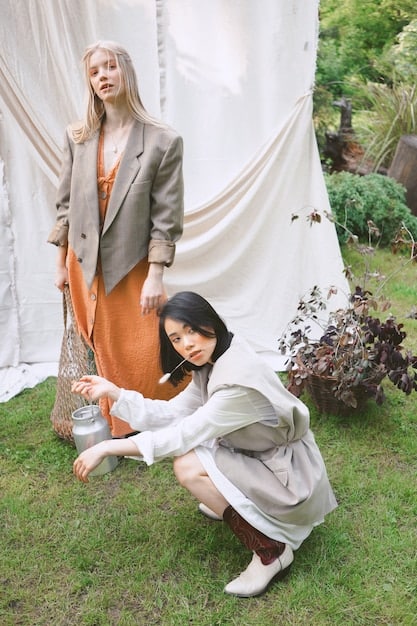
In conclusion, modern adaptations of the Hanbok are making it more accessible and relevant to contemporary fashion. Designers are successfully blending tradition with innovation, creating garments that honor Korean culture while appealing to a global audience.
The Etiquette of Wearing Hanbok
Understanding the etiquette of wearing Hanbok is important for respecting Korean culture. While adaptations allow for flexibility, knowing the traditional customs adds depth to the experience of wearing this garment. This shows respect for the traditions that have shaped its significance.
Occasions Suitable for Wearing Hanbok
Traditionally, Hanboks are worn for special occasions such as weddings, festivals, and ancestral rites. However, modern interpretations allow wearing Hanboks for less formal events, such as cultural gatherings or themed parties. It’s essential to consider the occasion’s formality and choose an appropriate style and color.
Proper Ways to Care for Your Hanbok
Proper care ensures your Hanbok remains in excellent condition. Traditional Hanboks often require professional cleaning due to their delicate fabrics and intricate designs. Modern adaptations may be machine washable, but always check the care label before laundering. Store your Hanbok in a cool, dry place, away from direct sunlight.
- Professional Cleaning: Recommended for traditional Hanboks.
- Gentle Handling: Avoid harsh detergents and abrasive cleaning methods.
- Proper Storage: Keep in a cool, dry place to prevent damage.
In conclusion, understanding the etiquette and proper care for Hanbok enriches the wearing experience, ensuring respect for its cultural significance. This knowledge helps preserve the beauty and integrity of the garment.
The Global Impact of Hanbok and Future Trends
The rising popularity of Hanbok in the US is part of a broader global trend, with the garment finding acceptance and appreciation worldwide. Its impact transcends fashion, influencing art, design, and cultural exchanges. This signals a promising future with continued innovation and broader recognition.
Hanbok’s Influence on Global Fashion Trends
Hanbok’s influence is evident in global fashion trends, with designers incorporating its distinctive silhouettes, colors, and details into their collections. This cultural exchange enriches the fashion landscape, promoting diversity and appreciation for different traditions. The garment’s elegance and simplicity inspire creative interpretations globally.
Future of Hanbok: Innovation and Recognition
The future of Hanbok looks promising, with ongoing innovation and increasing recognition. Designers continue to experiment with new materials and techniques, creating modern and sustainable Hanboks. International collaborations and exhibitions further promote its global appeal, solidifying its place in the fashion world.
Ultimately, the global impact of Hanbok and its promising future signify a growing appreciation for Korean culture and its artistic traditions. This expansion promotes cross-cultural understanding and celebrates the beauty of diversity in fashion.
| Key Point | Brief Description |
|---|---|
| 👗 Cultural Significance | Hanbok symbolizes Korean history and artistry. |
| 📺 K-Wave Influence | K-dramas and K-pop boost Hanbok’s popularity. |
| 🛍️ Finding Authentic Styles | Online retailers and cultural centers offer variety. |
| ✨ Modern Adaptations | Designers blend tradition with contemporary trends. |
Frequently Asked Questions about Hanbok
Traditional Hanboks are typically made from silk or ramie, prized for their luxurious feel and elegant drape. These natural fibers contribute to the garment’s overall beauty and comfort, making it a cherished attire for special occasions.
To select the perfect Hanbok size, refer to the retailer’s sizing chart and measure your bust, waist, and height. Hanboks are designed to be slightly loose, so prioritize comfort and ease of movement for the best fit.
Yes, modern Hanbok-inspired clothing is designed for casual wear. These pieces incorporate traditional elements with contemporary styles, making them suitable for everyday outfits. They offer a subtle nod to Korean culture.
For home care, gentle hand washing or professional dry cleaning is recommended, depending on the fabric. Always check the care label. Store your Hanbok in a dry place, away from direct sunlight, to maintain its color and fabric integrity.
Traditionally, specific colors were worn for certain occasions and social statuses. Today, while those distinctions are less rigid, vibrant colors are often chosen for celebrations, while more subdued tones may be preferred for formal events.
Conclusion
In conclusion, the rising popularity of Hanbok in the US signifies a growing appreciation for Korean culture and fashion. As more people discover the beauty and versatility of this traditional garment, it is poised to become a lasting trend, blending seamlessly into the global fashion landscape.
